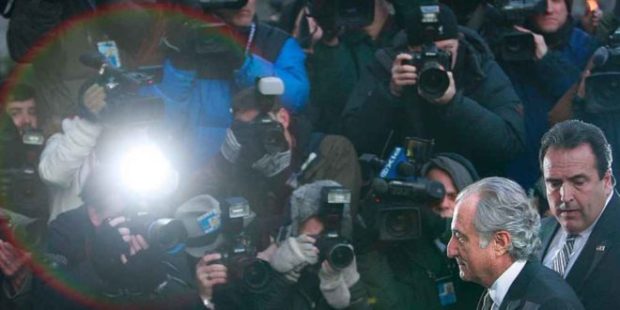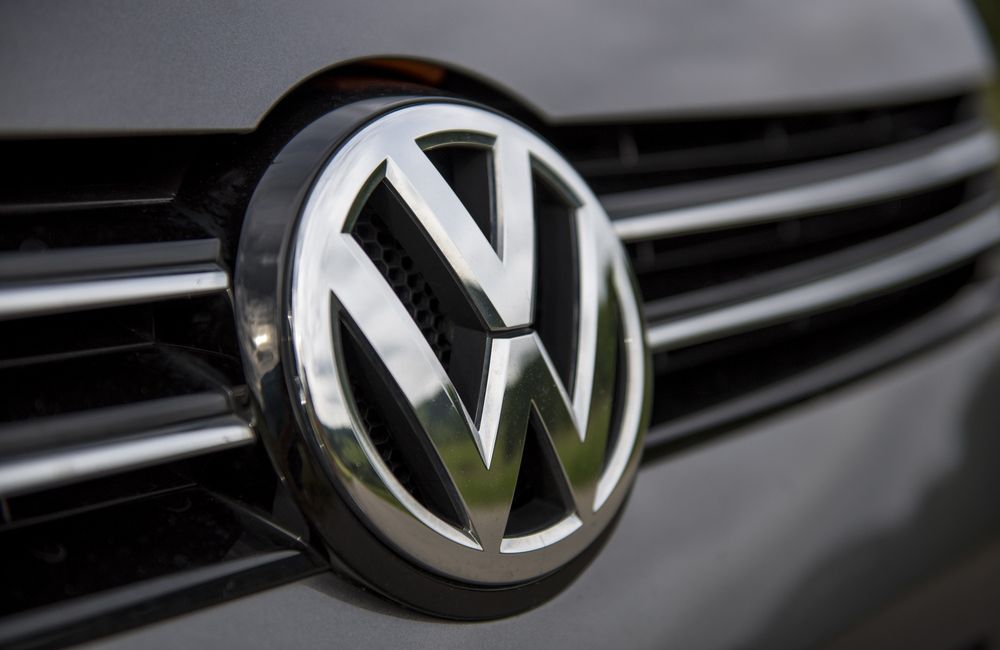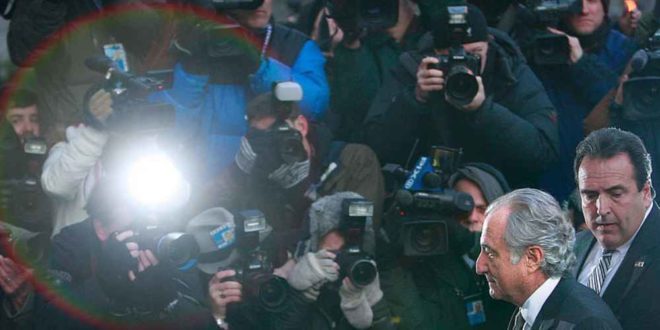
Scamming naive people who are hoping to make a quick profit is a practice that opportunists have been undertaking for thousands of years. As the times have changed, however, the scams and those perpetrating them, have evolved.
From modern-day multi-layered marketing companies to multi-million dollar carpet cleaning companies that don’t even exist, here is a quick look at some of the biggest money scams of all time, and some of the people responsible for them.
1. Charles Ponzi and the Original Ponzi Scheme
Year: 1919-1920
Approx. Amount: $7 Million*
Company / Person Involved: Charles Ponzi
A Ponzi scheme is based on the idea of taking the money from recent investors and using it to pay out the promised profits to older investors. Charles Ponzi, the scheme’s namesake, and original perpetrator convinced people to invest in IRCs (international postal reply coupons), which he was buying in one country and selling in another, where people paid more for them.
 The Original Ponzi Scheme @sigsolar / Pinterest.com
The Original Ponzi Scheme @sigsolar / Pinterest.comIn 1920, after more than a year in operation, the fuzz got wise to Ponzi’s scheme, and Chuck was arrested. Some sources claim the Ponzi’s investors’ losses totaled close to $20 million, however, Charles Ponzi was charged for scamming only $7 million from those who trusted him, as well as being convicted of fraud on the federal and state levels.
2. The ’90s Boy Band Con
Year: 2006
Approx. Amount: $1+ Billion*
Company / Person Involved: Lou Pearlman
Known for being the man behind the formations, and early successes of N’Sync and the Backstreet Boys (and subsequently ripping both bands off substantially), Lou Pearlman was also the man behind the Trans Continental Airlines Travel Services Ponzi scheme that was responsible for defrauding close to a billion dollars ($300 million of which is still missing) from a total of 1,700-some-odd investors.

©Mark Weiss/WireImage/Getty Images
In 2008, Pearlman was sentenced to 25 years behind bars for his crimes, but after only 8 years, in 2016 he passed away while in custody. 2 years before passing, Pearlman was quoted by The Hollywood Reporter as saying that his scheme was “smarter” than Bernie Madoff’s because he (Pearlman) had a real way of making money (the aforementioned boy bands), while Madoff did not.
3. The LuLaRoe Billion-Dollar Pyramid Scheme
Year: 2012-Present
Approx. Amount: $2 Billion*
Company / Person Involved: LuLaRoe
LuLaRoe works just like any other pyramid scheme. Sellers buy lots of products and make money by selling the product or recruiting others to sell the product. Encouraged to spend anywhere from 5 to 9 thousand dollars on their first purchase, and advised to reinvest profits back into the company, investors in the multi-level marketing company have been swindled out of almost $2 billion.
 @LuLaRoe/YouTube
@LuLaRoe/YouTubeThe clothing company that’s based out of southern California has had its fair share of troubles with the law in recent years. There are also claims that the company has been charging customers sales tax in states that don’t have any. No charges have currently been laid, however, there are multiple lawsuits against the company that are pending.
4. Enron Scandal – The Fall of a Wall Street Darling
Year: 2001
Approx. Amount: $11 Billion*
Company / Person Involved: Enron Corporation
Based on revenue alone, the Houston-based energy company, Enron, was once the seventh-largest company in America. However, with some under-the-table deals, and deceitful bookkeeping, Enron managed to keep hundreds of millions of dollars in debt hidden, in what is now one of the most well-known scandals in recent history.
 Enron ©Johnny Hanson / Gettyimages.com
Enron ©Johnny Hanson / Gettyimages.comAll great webs, eventually, come unraveled, and that’s exactly what happened to Enron in 2001. Thousands upon thousands of documents that verified the accounting fraud were shredded and, in late 2001, Enron’s share price dropped from just north of $90 to just under 30 cents. Former CEO Jeffrey Skilling was sentenced to 24 years in prison (released after 12) and was made to forfeit $45 million.
5. A $2.1m Toga Party & the Tyco International Scandal
Year: 2002
Approx. Amount: $600 Million*
Company / Person Involved: Dennis Kozlowski & Mark Swartz
Prior to the scandal that rocked the Tyco International world, the company was a safe bet to invest in as the company was focused on manufacturing health care and safety equipment, as well as electronic components, all of which were in high demand and not looking to cool off anytime soon.
 Tyco International ©Michael Nagle / Gettyimages.com
Tyco International ©Michael Nagle / Gettyimages.comThat wasn’t enough for CEO Dennis Kozlowski, or CFO Mark Swartz, who, without shareholder approval, took $170 million in low-to-no interest loans and sold 7.5 million shares of the company for $430 million. The scandal was discovered in the early parts of 2002, and the duo of Swartz and Kozlowski have since been found guilty of almost 30 counts, and have both been given 25-year sentences at the state level.
6. How a Squid Game Crypto Scam Got Away With Millions
Year: 2021
Approx. Amount: $3 Million*
Company / Person Involved: Squid CryptoCurrency
Similar to other companies that offer investors the chance to make a lot of money in a short amount of time, having experienced a share increase of more than 1,000% in the fall of 2021, going from around $1 to a little over $2,800/coin, the Squid Game cryptocurrency seemed too good to be true, and that’s probably because it was.
 Squid Game ©DANIEL CONSTANTE / Shutterstock.com
Squid Game ©DANIEL CONSTANTE / Shutterstock.comDays later, the price of the crypto coin that drew its name from the popular Netflix show crashed, and the project’s website, as well as its social media footprint, vanished along with $3 million of the investor’s hard-earned money.
7. The Conman Who Sold Rich Investors a Fake Country
Year: 1821
Approx. Amount: $5 Billion* (2021)
Company / Person Involved: Gregor MacGregor
200 years ago, the “old world” wasn’t wasting any time in colonizing the “new world”, and Gregor MacGregor found a way to take advantage of the people that were hoping to get in on the game. In 1821, MacGregor tricked hundreds of people into investing in Poyais, a colony that was anything but a utopia on the Honduran Bay, and that he had been made “Cazique” (chief) of the colony by the land’s natives.
 Gregor MacGregor ©Print Collector / Gettyimages.com
Gregor MacGregor ©Print Collector / Gettyimages.comNone of that was real, of course, and Cazique MacGregor ended up scamming the hopeful colonizers out of $1.75 million (1821). When he was found out, Gregor went into hiding, but after only 3 months, he was captured and stood trial. Somehow, Gregor was acquitted of all charges against him and got away with one of the most elaborate scams in history.
8. The Collapes of Lehman Brothers
Year: 2008
Approx. Amount: $600+ Billion*
Company / Person Involved: Lehman Brothers Holdings Inc.
It’s not very often that companies that have been around for more than a century file for bankruptcy, but that’s probably because there are not many companies left that have been around for 100+ years. In 2008, with approximately 25,000 employees and close to $600 billion in bank debt, after 158 years in business, the Lehman investment bank filed for Chapter 11 and sent the business world scrambling.
 Lehman Brothers ©Oli Scarff / Gettyimages.com
Lehman Brothers ©Oli Scarff / Gettyimages.comAt the time that Lehman Brothers filed for bankruptcy, the company had approximately $639 billion in assets, and although no charges have been filed against the company as of yet, a bankruptcy examiner from the case was suspicious of fraud on the part of the company’s top execs as well as Ernst &Young, Lehman Brothers’ auditor.
9. How a Chinese Start Up Took The US Stock Market for Billions
Year: 2020
Approx. Amount: $300 million*
Company / Person Involved: Luckin Coffee
Luckin Coffee, a Chinese retailer selling tea and coffee, was charged by the U.S. Securities and Exchange Commission with lying on its accounting papers. Luckin stated a lot of incorrect information pertaining to its expenses, revenue, and operating loss. The numbers were faked in order to make investors think the company was doing really well and growing quickly.
 Luckin Coffee @BreakingAsiaHQ / Twitter.com
Luckin Coffee @BreakingAsiaHQ / Twitter.comThe lie ballooned until the SEC found them out. Luckin fabricated $300 million in revenue and growth, and what’s worse is that they did so intentionally. The SEC made the company pay a $180 million fine for the deceit, which led Luckin to file for bankruptcy in 2021.
10. The Wells Fargo Fake Account Scandal
Year: 2016
Approx. Amount: $2.7 billion in penalties and lawsuits*
Company / Person Involved: John Stumpf
The Wells Fargo accounting scandal broke in 2016, shattering the bank’s reputation as one of few financial institutions that were stable on Wall Street. The ramifications of the deceit are still ongoing in 2021, and the penalties, civil, and criminal lawsuits have all cost Wells Fargo $2.7 billion (and counting). CEO John Stumpf resigned after Congress led an investigation into the bank.
 Wells Fargo @CNN / Twitter.com
Wells Fargo @CNN / Twitter.comWells Fargo’s scandal consisted of the bank making millions upon millions of fake checking and savings accounts on behalf of the bank’s clients. They did this without the consent of their customers, and, when the scandal broke, the Consumer Financial Protection Bureau fined Wells Fargo nearly $200 million. But, as you can see, the fines and penalties are still being collected.
11. How the Auto Industry Lied to Us All – The Volkswagen “Dieselgate” Scandal
Year: 2015
Approx. Amount: $35.25 billion in fines*
Company / Person Involved: Hanno Jelden
You can try to cheat the federal government, but, eventually, you will get caught. The Volkswagen emissions scandal, also known as Emissionsgate and Dieselgate (thanks, Nixon), began in the fall of 2015 after the EPA caught Volkswagen violating the Clean Air Act.
 ©Gyuszko-Photo/Shutterstock.com
©Gyuszko-Photo/Shutterstock.comVW vehicles were equipped with computer software mechanisms known as “Defeat Devices.” These Defeat Devices would allow the diesel motor vehicles to cheat on their emissions tests, giving them a clean bill of health when, in reality, they were over the line for pollutant emissions. Volkswagen has said that the scandal has cost them $35.25 billion in fines and penalties.
12. The $1.8 Billion Waste Management Fraud
Year: 1998
Approx. Amount: $1.7 billion*
Company / Person Involved: Dean Buntrock
Waste Management was another company caught red-handed by the SEC (with the help of a company whistleblower). Waste Management, Inc., a trash disposal company, inflated its profits by a phony $1.7 billion in order to deceive investors. The scandal made Waste Management executives millions, and investors were defrauded out of a total of $6 billion.
 ©kaliantye/stock.adobe.com
©kaliantye/stock.adobe.comNot to mention, Waste Management’s reputation was tarnished for years to come. Revenues were not increasing as quickly as executives wanted, so they simply made up the numbers. We have A. Maurice Meyers, the company’s new CEO, to thank for uncovering the scandal. When Meyers assumed his CEO position in 1998, he discovered the fraud and immediately turned Waste Management into the SEC.
13. The Fall of a Giant – The AIG Scandal
Year: 2007-2008
Approx. Amount: $180 billion*
Company / Person Involved: AIG
AIG was one of the beneficiaries of the bailout in 2008. The company was considered “too big to fail,” but that doesn’t mean it was too big to be foolish. The insurance giant was among quite a few companies that gambled on peoples’ collateralized debt obligations. AIG was also one of many who lost that gamble, falling to pieces and leaving nothing but wreckage in its wake.
 American Insurance Group (AIG) ©Evan El-Amin / Shutterstock.com
American Insurance Group (AIG) ©Evan El-Amin / Shutterstock.comAIG had to repay a huge debt to U.S. taxpayers, who were irritated that they had to bail out a company full of million-dollar executives while they, the people, lost their homes and businesses. The total bailout for AIG was $180 billion, courtesy of the Federal Reserve.
14. Madoff Ponzi Scheme – The Largest Ponzi Scheme in History
Year: 1960-2008
Approx. Amount: $50 Billion*
Company / Person Involved: Bernard Madoff
While serving part of his 150-year sentence, Bernard ‘Bernie’ Madoff passed away at the age of 82. Why was Bernie given 150 years behind bars? Because the Ponzi scheme he orchestrated is among the largest in history, amounting to $50 billion in losses, and it was his own family who ended up turning him in.
 Madoff Investment Securities LLC Ponzi Scheme ©Stephen Chernin / Gettyimages.com
Madoff Investment Securities LLC Ponzi Scheme ©Stephen Chernin / Gettyimages.comIn 2008, Bernard Madoff’s own son came clean to authorities about what was really going on in the family business. The securities firm was all a scam. Madoff had been hiding the losses incurred through hedge fund investments by using later investors’ money to pay earlier investors when it was time to withdraw.
15. Swindlers, fraudsters and F1’s – The Moneytron Ponzi Scheme
Year: 1980s
Approx. Amount: $860 million*
Company / Person Involved: Jean-Pierre Van Rossem
Jean-Pierre Van Rossem was famous as the man behind the Moneytron scandal, a scheme he devised, according to him in his book Gevangenisboek (“Prison Book”) to “f**k the system.” Rossem was a stock market guru with the investment company, which offered endless returns and had wealthy customers all over the world, including ones from the Belgian Royal Family.
 Moneytron @GPOnyx / Twitter.com
Moneytron @GPOnyx / Twitter.comVan Rossem claimed he’d come up with a model that could beat the stock market, and he made $860 million for himself. The problem was, he had no such model, and, after he lost all his clients’ money, he went to jail for five years. All of his possessions, including his 108 Ferraris, were sold to pay off his debts.
16. Yen from Heaven: The Biggest Scam in Japanese History – The L&G Investment Fraud
Year: 2001-2009
Approx. Amount: $1.76 billion*
Company / Person Involved: Kazutsugi Nami
L&G K.K. cheated its consumers out of $1.76 billion. The bedding supplier, which went bankrupt in the 2000s, was caught in an investment scheme. The controversy centered around Kazutsugi Nami, who invented a quasi-currency he called “Enten.” Enten was used to attract investors, but it was not really worth anything.
 ©fran_kie/Shutterstock.com
©fran_kie/Shutterstock.comInvestors received L&G dividends in Enten instead of real money, which violated Japanese investment laws. Nami, who had built up a cult-like following with his investors, thanks to his degree that he was divinely appointed to eliminate poverty from the world, was arrested in 2009 and sentenced to eighteen years in prison for the scandal.
17. The Fyre Festival Fraud: Fame and False Advertising
Year: 2016
Approx. Amount: $27.4 million*
Company / Person Involved: Billy McFarland
Billy McFarland’s Fyre Fest is perhaps the most well-known scandal of the past few years, and it is the subject of not one, but two documentaries on Netflix and Hulu. Billy McFarland founded Fyre Media, which was supposed to host a luxury music festival that would promote the company’s talent-booking mobile app.
 @Hulu/Twitter.com
@Hulu/Twitter.comMcFarland made $27.4 million from marketing and ticket sales, and then he abruptly aborted the ill-fated event after running into problems with logistics, food, security, staffing, and pretty much everything you could think of. McFarland was convicted of fraud in 2018 and sentenced to six years in federal prison for his role in the infamous scandal.
18. Stratton Oakmont and the ‘Wolf of Wall Street’
Year: 1989-1996
Approx. Amount: $13 billion*
Company / Person Involved: Jordan Belfort, Danny Porush
If you’ve ever seen The Wolf of Wall Street, then you know some of what happened with Stratton Oakmont, as that blockbuster film is partially based on the life of Jordan Belfort, one of the founders of the brokerage house. Stratton Oakmont defrauded almost all of its shareholders, leading to the conviction and incarceration of Belfort and his co-founder, Danny Porush.
 Stratton Oakmont @Jordan Belfort – Wolf of Wall Street / Facebook.com
Stratton Oakmont @Jordan Belfort – Wolf of Wall Street / Facebook.comStratton Oakmont’s main charge was that the firm participated in microcap stock fraud. They’d inflate the price of owned stock through false statements so that they could sell it at a higher cost. After the overvalued shares were dumped, investors lost their money.
19. Crazy Eddie: The Popular Electronics Chain That Scammed America
Year: 1971-1996
Approx. Amount: $150 million in fines*
Company / Person Involved: Eddie and Sam Antar
Crazy Eddie, a consumer electronics chain in the U.S., was doing shady dealings since its inception in 1961. The chain had forty-three stores in four different states, and it had over $300 million in sales. Eddie Antar, the founder, resigned from the company in 1996, cashing in millions of dollars in stock shares.
 Crazy Eddie @njdotcom / Pinterest.com
Crazy Eddie @njdotcom / Pinterest.comThe company was later sold, and the new owners discovered a ton of fraudulent business practices committed by the Antar family, including violations of SEC laws. Antar reportedly falsified his inventories by as much as $10 million a year. Antar was eventually caught and sentenced to eight years in prison and $150 million in fines.
20. Allen Stanford’s $7bn Ponzi Scheme
Year: Late-80s to 2009
Approx. Amount: $8 Billion*
Company / Person Involved: Robert Allen Stanford
For close to 20 years, the rates of the certificates of deposit (CDs), that the Stanford International Bank was offering, were constantly higher than what would be given from the banks in the United States. As it turned out, this was too good to be true as, by using the promise of improbably high returns on investors’ money, Robert Allen Stanford orchestrated one of the longest-running and most-profitable investment schemes in history.
 Stanford International Bank Investment Scheme ©Dave Einsel / Gettyimages.com
Stanford International Bank Investment Scheme ©Dave Einsel / Gettyimages.comAs a result of his misappropriating more than $7 billion of investor’s money for his own leisure, Robert Allen Stanford was sentenced to an unprecedented 110 years in 2012. In 2015, Stanford’s appeal to have his conviction overturned, but the appeal fell on deaf ears and was denied by the U.S. court of appeals.
 Home Of Ghana News Ghana News, Entertainment And More
Home Of Ghana News Ghana News, Entertainment And More





